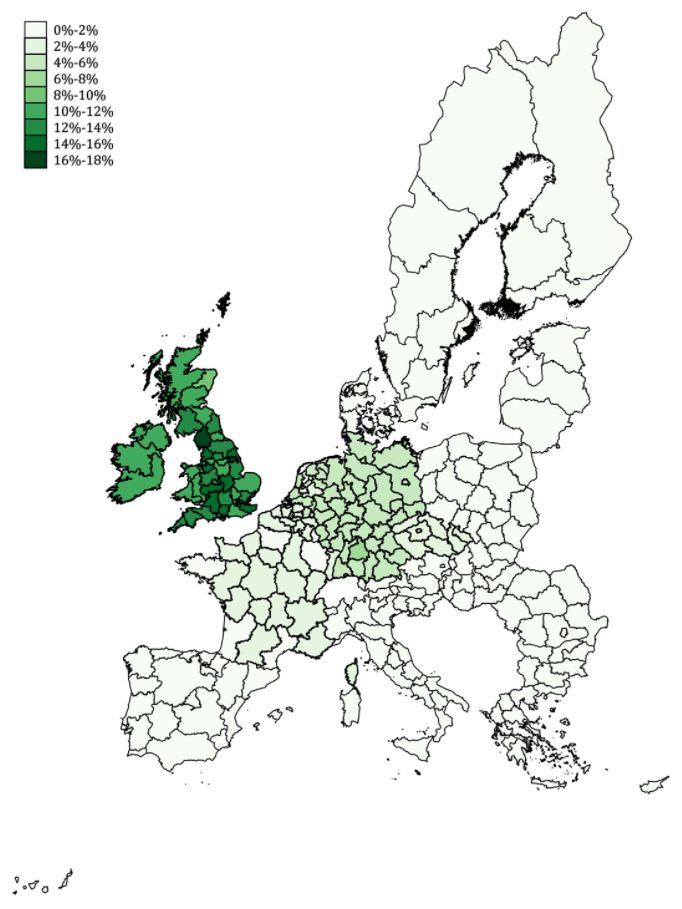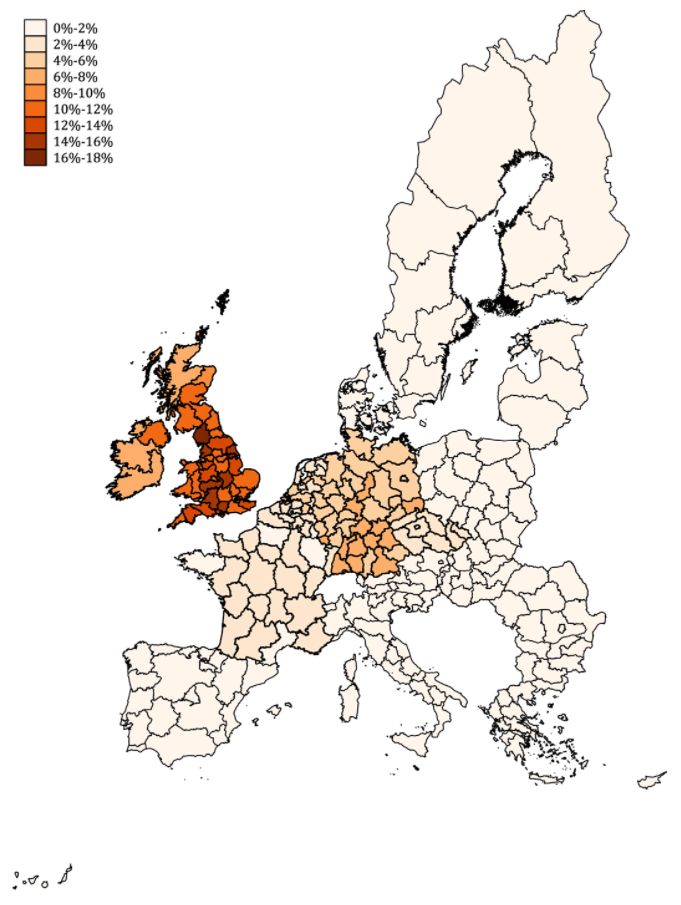The UK regions that voted to leave the European Union are more vulnerable to the economic impact of Brexit than those which voted Remain, research suggests.
On the whole, the UK is 4.6 times more exposed than the rest of the EU, with the majority of EU member states facing almost no exposure at all, according to the University of Birmingham’s research.
Because of this, the UK is in a “very weak bargaining position”, it said.

The study from the university’s City Region Economic and Development Institute examined to what extent the economies of EU regions were exposed to the possible negative trade-related consequences of the UK’s departure
Results show that 2.64% of EU GDP is at risk because of Brexit trade related consequences.
But in the UK, Brexit trade risks account for 12.2% of UK GDP.
As illustrated in the map below, areas in the Midlands and the north of England, many of which voted for Brexit, had the highest levels of exposure to Brexit in the UK based on GDP, a measure of their economic wealth.

The report specifies that 16.3% of the GDP of Cumbria is vulnerable to Brexit and in Gloucestershire, Wiltshire and North Somerset it is 15.6%. Across these areas support for leaving the EU was high.
Meanwhile, in inner London, where most people voted to Remain in the EU, 10.3% of the GDP of the aggregate economy is vulnerable to Brexit.
For London and Scottish regions, the local GDP exposure rates are still much higher than for regions outside the UK, but “clearly lower than for most of the UK”, the research shows.
Regions in Ireland are the only other areas as exposed to Brexit as some UK regions.
The research states: “UK regions typically exhibit Brexit trade-related risks exposure of the order of 10–17% of regional GDP, with Irish regions also displaying values of the order of 10% of GDP.
“The Irish regions therefore have levels of Brexit-related risk exposure which are similar to the UK regions with the lowest levels of Brexit exposure, namely London and parts of Northern Scotland.”
The patterns in regional GDP exposure is very similar to regional labour incomes exposed to Brexit-related risks (as highlighted in the map below).

Professor Raquel Ortega-Argilés, University of Birmingham, said the study is designed to analyse the economic impacts of Brexit by examining four main issues.
These are:
The long-term nature of the UK’s post-Brexit trade agreements with both the EU and the World Trade Organisation (WTO)
The regional industrial and trading structures
The impacts of Brexit on both the national and regional competitive positioning including that of both the UK and the individual regions’ competitor regions
The changes in local development policy and governance settings induced by leaving the EU.
Ortega-Argilés said to The Guardian: “London is genuinely the most globalised part of the UK and as such less dependent on European markets for its prosperity.
“In contrast, many parts of the UK, especially in the Midlands and in the north of England, are heavily dependent on European markets for their trade and prosperity, but in fact these are the regions that voted for Brexit.”
